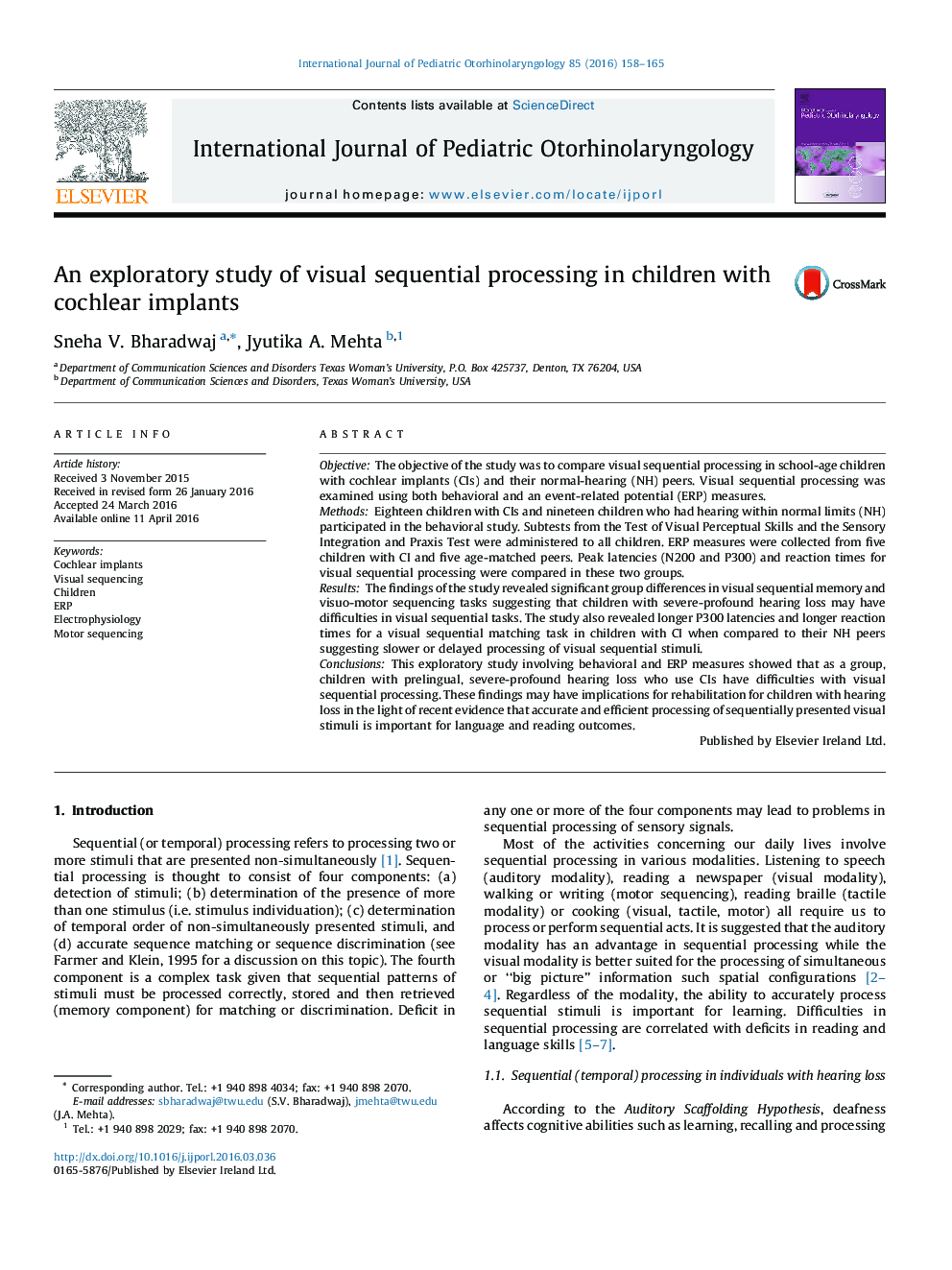| Article ID | Journal | Published Year | Pages | File Type |
|---|---|---|---|---|
| 6213147 | International Journal of Pediatric Otorhinolaryngology | 2016 | 8 Pages |
ObjectiveThe objective of the study was to compare visual sequential processing in school-age children with cochlear implants (CIs) and their normal-hearing (NH) peers. Visual sequential processing was examined using both behavioral and an event-related potential (ERP) measures.MethodsEighteen children with CIs and nineteen children who had hearing within normal limits (NH) participated in the behavioral study. Subtests from the Test of Visual Perceptual Skills and the Sensory Integration and Praxis Test were administered to all children. ERP measures were collected from five children with CI and five age-matched peers. Peak latencies (N200 and P300) and reaction times for visual sequential processing were compared in these two groups.ResultsThe findings of the study revealed significant group differences in visual sequential memory and visuo-motor sequencing tasks suggesting that children with severe-profound hearing loss may have difficulties in visual sequential tasks. The study also revealed longer P300 latencies and longer reaction times for a visual sequential matching task in children with CI when compared to their NH peers suggesting slower or delayed processing of visual sequential stimuli.ConclusionsThis exploratory study involving behavioral and ERP measures showed that as a group, children with prelingual, severe-profound hearing loss who use CIs have difficulties with visual sequential processing. These findings may have implications for rehabilitation for children with hearing loss in the light of recent evidence that accurate and efficient processing of sequentially presented visual stimuli is important for language and reading outcomes.
